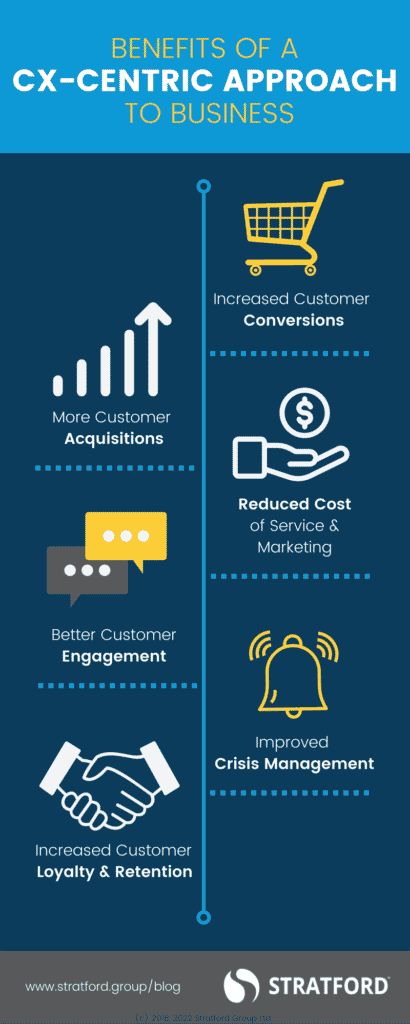It’s no surprise that today’s organizations reach their customers through multiple channels. This omni-channel nature of modern business interactions means companies need to think beyond customer service. They need to concentrate on creating a coherent experience from start to finish; from awareness to touchpoint to purchase to aftercare/support.
As the number and nature of client touch points continues to increase and evolve with technology, companies have been shifting their attention to the concept of Customer Experience (CX), providing a more holistic way to interact and provide products and services to customers.
What is Customer Experience (CX)?
Companies are struggling to rise above the noise of today’s overcrowded traditional and social media channels, with many looking for new and different ways to stand out in and effort to make their brands recognizable and memorable.
While visibility and accessibility are important, it is the perceived quality of interactions that establishes and influences the value of a brand. And with so many avenues and platforms through which to interact, companies are learning the ins and outs of managing the perception of their brands in an era where 24/7 availability is expected and negative reviews have the ability to quickly go viral.
Organizations can no longer rely on the traditional siloes of advertising, sales and customer service – digital media has mashed everything together. A customer might see a TV ad, visit a website, buy a product, request maintenance, write a review and repeat the process multiple times in the span of a short period.
Companies want the whole pipeline to feel like a singular and high-quality experience of the brand.
In a CX-centric approach, they design all of the channels with an understanding and awareness of how their customers interact with every touch-point of the system with the goal of creating a cohesive and reliable brand identity the delivers on its promises and manages expectations.

Benefits of a CX-centric Approach to Business
Companies are investing time and money in a CX-centric approach for good reason and are finding it can improve their businesses on multiple fronts.
Our top 5 benefits are identified in the infographic to the left.
Your Customer Experience Strategy
Creating a great customer experience needs planning and effort. It’s important to analyze the requirements of your particular business and understand all the touch points to develop a robust strategy.
Here are a few ideas to get you started:
Manage Your Brand Identity: Understand the perception of your brand through regularly gauging what the market is saying about your products and services.
Reviews and social media are valuable resources to find out about your brand image.
Ask Your Customers: You don’t always have to guess the needs of your customers. You can directly engage them through surveys or real-time events to understand what they want from you.
This knowledge can help you create better products and services.
Ensure Timely Customer Service: Consumers value companies that respond and resolve issues in a timely manner and customer service is still an important part of the customer experience.
Maintaining a well-trained customer service team is mandatory for every business.
A robust CX-centric approach to business requires understanding and planning. Companies need to invest time and money to create exceptional customer experience pipelines that will create value for consumers.
The investment will pay off in higher customer conversions, better customer retentions, reduced costs and long-term business growth.
You May Also Be Interested In:
- 6 Key Advantages of Customer Experience Explained (Stratford Blog)
- Discover the Business Benefits of Customer Experience Excellence (Sitecore)
- Why a Great Customer Experience Management Strategy Matters (Survey Monkey)
- Customer Experience is Not Shaped By Customer Service (Forbes)
- The Importance of Customer Experience in the Age of Instant Gratification (Forbes)
- 6 Companies that Prove the Power of Word of Mouth Marketing (Huffington Post)
- Consumer Trust in Online, Social, and Mobile Advertising Grows (Nielsen)
- Strategies to Drive Customer Engagement (Forbes)
- How to Define a Customer Experience Strategy (HubSpot)
FROM THE ARCHIVES: This blog post was originally published in April 2018 and has been updated with new content and updated links.
